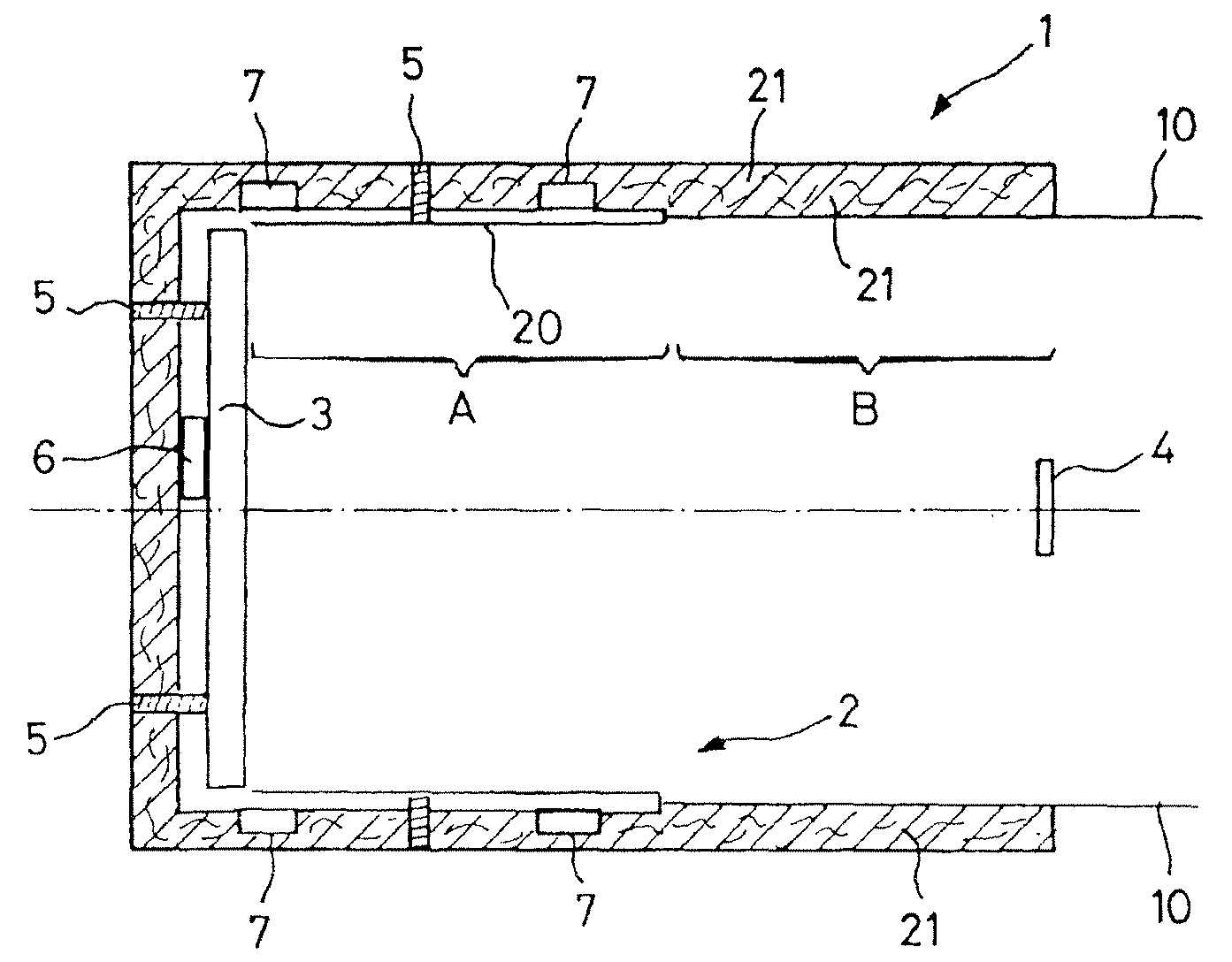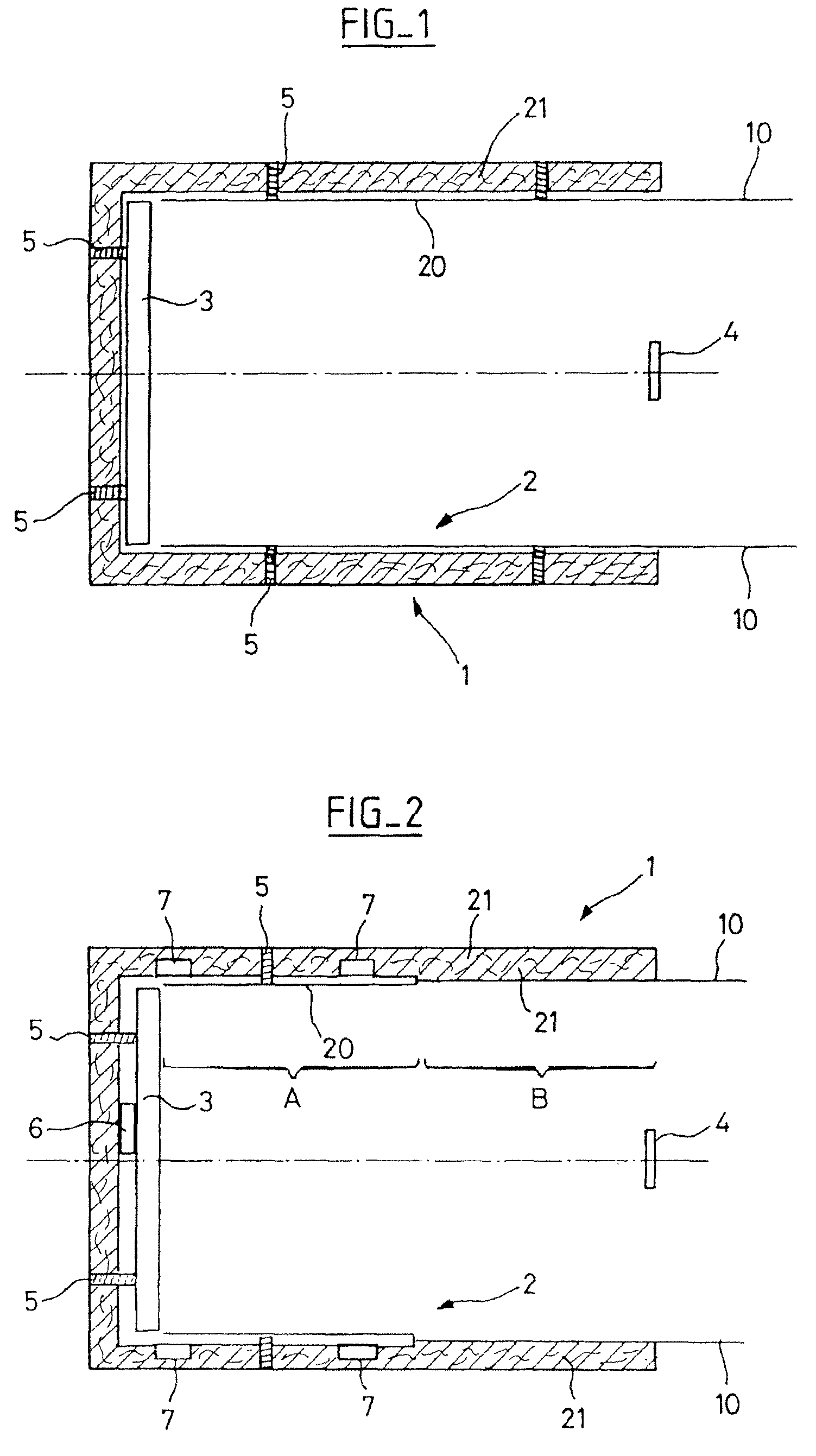Optical instrument comprising an entrance cavity in which a mirror is placed
an optical instrument and entrance cavity technology, applied in the direction of instruments, cosmonautic vehicles, transportation and packaging, etc., can solve the problems of not being able to compensate for orbital fluctuations, high cost and complexity, and risk of failure, so as to limit the temperature fluctuations of the cavity and the cavity, dampen the instantaneous variations, and limit the effect of the temperature fluctuations
- Summary
- Abstract
- Description
- Claims
- Application Information
AI Technical Summary
Benefits of technology
Problems solved by technology
Method used
Image
Examples
Embodiment Construction
[0027]The instrument 1 described comprises a cavity 2 making it possible to receive the mirror 3, called the primary mirror, and to attach it to the instrument by conventional attachment means 5. Usually, the mirror is in a tubular cavity with a diameter slightly greater than its own so as to come on the periphery of this mirror. The mirror 3 is centered in the cavity and its active face is turned toward the entrance of the cavity, the place for the location of a secondary mirror 4.
[0028]In the prior art, the cavity is made by a thermal insulation casing made by an insulation cover called MLI (Multi-Layered Insulation) painted black on the inside of the cavity and having great temperature variations.
[0029]Rather than using a conventional insulation casing, the proposed solution consists in using an entrance cavity for the optical instrument 1 having a great thermal inertia. For this, the cavity 2 comprises at least one portion made of a material with high inertia with respect to the...
PUM
 Login to View More
Login to View More Abstract
Description
Claims
Application Information
 Login to View More
Login to View More - R&D
- Intellectual Property
- Life Sciences
- Materials
- Tech Scout
- Unparalleled Data Quality
- Higher Quality Content
- 60% Fewer Hallucinations
Browse by: Latest US Patents, China's latest patents, Technical Efficacy Thesaurus, Application Domain, Technology Topic, Popular Technical Reports.
© 2025 PatSnap. All rights reserved.Legal|Privacy policy|Modern Slavery Act Transparency Statement|Sitemap|About US| Contact US: help@patsnap.com


